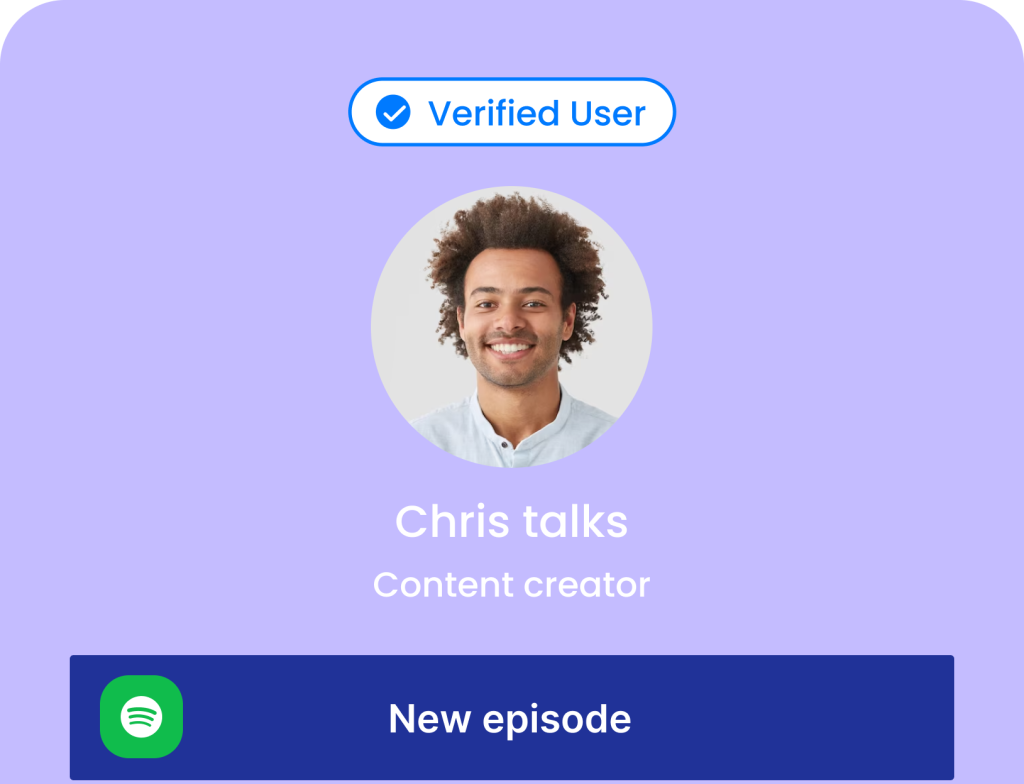Influencer marketing has become a powerful marketing strategy for brands looking to connect with their target audience in a more authentic way. Instead of relying on traditional ads, businesses now turn to influencer collaborations to promote their products through trusted voices. However, as more creators enter the space, competition for brand partnerships is growing. Simply having a large following is no longer enough as brands now want influencers who align with their values, engage their audience, and create high-quality content.
To stand out, influencers must understand what brands expect from partnerships. This includes having a strong engagement rate, as well as taking a professional approach. That said, one of the best ways to showcase your value is through a well-crafted media kit. A great media kit highlights your audience insights, past collaborations, and content strengths, making it easier for brands to see why you’re the right fit.
In this post, we’ll explore what brands look for in influencer partnerships and how you can position yourself for success.
What Brands Look for in Influencer Partnerships
In most cases, people assume all a brand needs from influencer partnerships is conversion. However, this isn’t always the case as most brands now look to take their customers on a journey that turns them into a lifelong fan of the brand.
Since a single conversion can’t achieve this, brands tend to go to creators who have experience in creating an immersive journey that not only leads to a one-time conversion but a lengthy partnership.
So what exactly do brands look out for in an influencer partnership?
1. Authenticity and audience engagement
Brands prefer working with influencers who create authentic content and have a real connection with their audience. They want influencers who share honest opinions rather than simply promoting products for a paycheck. When followers trust an influencer, they are more likely to engage, ask questions, and make purchases based on recommendations.
Forced or overly scripted promotions can feel fake and turn people away. Instead, brands value influencers who naturally integrate products into their content, making recommendations feel personal and believable. A strong engagement rate measured by likes, comments, shares, and saves matters more to a brand than a large follower count.
What a creator can do
For creators to stand out in brand partnerships, they should look to build strong relationships with their audience by creating meaningful conversations, and staying true to their voice. This makes them more appealing for influencer collaborations, as brands know their message will be received with trust and credibility.
2. Niche alignment and brand fit
Brands don’t just look for influencers with large audiences; they want influencers whose content aligns with their products and values. A well-defined niche helps influencers attract brand partnerships that make sense for both parties. For example, a skincare brand will prefer an influencer who focuses on beauty, self-care, or wellness rather than someone who primarily posts about gaming.
When an influencer’s niche aligns with a brand’s industry, their audience is more likely to be interested in the brand’s offerings. This increases the chances of a successful campaign with higher engagement and conversions.
What a creator can do
Creators can improve their chances of success at influencer collaborations by clearly defining their niche, staying consistent with their content themes, and working with brands that fit naturally into their existing platform. This not only attracts the right brand deals but also helps maintain audience trust.
3. Content quality and consistency
Brands want influencers who consistently produce high-quality content that grabs attention and drives engagement. Well-lit photos, clear audio, and professional editing can make a big difference in how a brand perceives an influencer. Strong storytelling also matters as brands prefer influencers who can create compelling narratives rather than just showcasing a product.
In addition to content quality, brands also check out consistency making posting regularly just as important as quality. An inactive influencer may lose audience interest, making them less attractive for brand partnerships. Brands look for consistency in posting schedules and content style, ensuring their message reaches an active and engaged audience.
What a creator can do
Influencers should focus on improving their content creation skills, whether through better photography, video editing, or copywriting. Also, maintaining a professional and polished look increases their chances of securing influencer collaborations with high-quality brands that value strong visual presentation.
4. Audience demographics and reach
Brands don’t just focus on how many followers an influencer has, they analyze who those followers are. Audience demographics, such as age, location, gender, and interests, play a major role in determining whether an influencer is the right fit for a campaign.
For example, a brand targeting Gen Z customers will prefer an influencer whose followers are mainly within that age group. If an influencer’s audience is too broad or doesn’t match the brand’s ideal customer, the partnership may not be effective. This is why marketing strategies often prioritize engagement rate over follower count.
What a creator can do
To attract the right brand partnerships, influencers should understand their audience demographics and highlight them in their media kit. Platforms like Instagram, YouTube, and TikTok offer analytics that show follower insights, helping influencers position themselves for the best collaborations.
5. Professionalism and reliability
Beyond content and audience, brands want to work with influencers who are professional and reliable. Missing deadlines, poor communication, or unprofessional behavior can damage an influencer’s reputation and cost them future opportunities.
Brands appreciate influencers who respond promptly, follow campaign guidelines, and deliver content on time. They also look for influencers who maintain a positive and brand-safe image. Controversial or offensive content can be a red flag, as brands don’t want to be associated with negative publicity.
What a creator can do
To maintain strong influencer collaborations, creators should approach partnerships like a business, treating brands as professional clients. Clear contracts, timely responses, and ethical behavior can set influencers apart and help them build long-term relationships in the industry.
6. Strong alignment with brand values
Brands are careful about who represents them, as an influencer’s values and messaging can impact their reputation. Companies prefer influencers whose beliefs, lifestyle, and messaging align with their brand identity. This ensures the partnership feels natural and resonates with the audience.
For instance, a sustainability-focused brand will look for influencers who actively promote eco-friendly living. A fitness brand will prefer influencers who genuinely live a healthy lifestyle rather than someone who only posts about fitness occasionally.
What a creator can do
To increase opportunities for brand partnerships, influencers should be mindful of how their content and values align with potential brands. Staying consistent in messaging and choosing collaborations that make sense for their audience will strengthen their credibility and attract brands that share the same vision.
7. Measurable results
Brands want to see results from their influencer collaborations. Simply posting about a product is not enough as brands analyze metrics like engagement rate, website traffic, conversions, and sales. They need influencers who can drive real action, whether that means increasing brand awareness, generating leads, or boosting sales.
Influencers who can show past success with measurable data have an advantage. Including case studies, performance reports, or testimonials from previous brand deals in a media kit can help showcase proven results.
What a creator can do
To stand out in brand partnerships, influencers should track their analytics and be able to demonstrate how their content drives engagement and conversions. The more value they can prove, the more brands will want to collaborate with them.
How to stand out as an Influencer
Before you can land any influencer partnership as a creator, you need to be visible to brands. This means you and your content must stand out of the crowd for brands to be willing to partner with you.
The competition is fierce and standing out will require using strategies that put you in the forefront of brands looking for influencer partnerships.
1. Develop a unique personal brand
Having a clear identity and a strong personal brand is one of the major ways for a creator to stand out. A unique style, voice, and perspective set an influencer apart from the competition. This makes you more memorable and increases your chances of securing brand partnerships that align with your expertise.
To get a unique personal brand, creators must also maintain authenticity as audiences connect more with influencers who share real experiences and honest opinions. When people trust your content, brands will see you as a valuable partner for influencer collaborations. Over time, this will position you as an authority in your niche and attract more partnership opportunities.
2. Optimize your media kit
A professional media kit helps influencers showcase their value to brands. This document acts as a resume, highlighting key information brands need before deciding on a marketing strategy. A well-structured media kit should include a short bio, audience demographics, engagement metrics, content examples, and a list of past influencer collaborations.
In making a media kit, creators should prioritize a clean and easy to read design. Use clear visuals, concise descriptions, and branded elements that reflect your personality. A great media kit can make a strong first impression and increase your chances of getting noticed.
3. Showcase your value with case studies
Brands want to see proof that an influencer can drive real results. A great way to stand out is by including case studies in your media kit or pitches. Case studies show detailed examples of past brand partnerships, including the goals, content strategy, and measurable outcomes like engagement rates, website clicks, or sales conversions.
If you’ve helped a brand increase awareness or boost sales, document the campaign’s success with screenshots, testimonials, or performance reports. This makes you more attractive for future influencer collaborations, as brands will see the return on investment you can provide.
4. Engage with brands proactively
Instead of waiting for brands to approach you, take the initiative to pitch yourself. Reaching out to brands proactively can get your notice even before the brand decides it’s looking for an influencer partner. Creators who want to stand out can use the approach by researching brands that align with their niche and values, then craft personalized outreach messages.
If you are using this strategy, you want to ensure that you avoid generic emails. Instead, show that you understand the brand’s mission and audience. Mention how your content and engagement levels fit their marketing strategy. Include key details like past partnerships, audience insights, and creative ideas for a potential collaboration.
When you reach out with confidence and a clear plan, brands are more likely to see you as a serious creator. Being proactive in networking, attending industry events, and engaging with brand social media accounts can also increase visibility and opportunities.
5. When pitching, do a detailed brand research
Before reaching out to a brand, take time to understand their target audience, messaging, and past influencer collaborations. Brands want to work with influencers who genuinely understand their products and values. If you pitch without research, your proposal may seem generic and get ignored.
Study the brand’s past marketing campaigns, the type of influencers they work with, and their brand voice. This helps you tailor your pitch to highlight why you’re a great fit. Mention specific products or previous campaigns you admire and suggest how you can contribute in a fresh and engaging way. A well-researched pitch shows professionalism and increases your chances of securing a brand partnership.
6. Propose creative campaign ideas
Brands appreciate influencers who bring unique and innovative content ideas to the table. Instead of waiting for a brand to tell you what to post, suggest engaging campaign concepts that fit their marketing strategy.
For example, you can propose interactive challenges, behind-the-scenes content, or creative storytelling formats that showcase the brand in an authentic way. Brands value influencers who think outside the box and provide content that captures audience interest. If you can present an idea that aligns with a brand’s goals and resonates with their audience, they will be more likely to choose you for their next influencer collaboration.
7. Leverage multi-platform presence
Brands prefer influencers who have a strong presence across multiple social media platforms. While Instagram is popular for brand partnerships, many brands also value TikTok, YouTube, and Twitter influencers for broader reach. Having an audience on different platforms makes you a more attractive partner because it allows brands to reach consumers in multiple ways.
Cross-platform influence also increases content visibility and engagement. For example, if you post a product review on YouTube and share clips on Instagram and TikTok, the brand gets exposure across different audiences. Expanding your presence on multiple platforms can help you attract bigger brands and more high-paying collaborations.
How an optimized media kit can help creators stand out
A well-crafted media kit shows brands why they should work with you. In a competitive influencer collaborations space, having an optimized media kit can set you apart and increase your chances of securing brand partnerships.
1. Showcases your unique value
An optimized media kit highlights what makes you different from other creators. It should clearly state your niche, content style, and audience demographics. Brands want to know why you’re the right fit for their marketing strategy, so use your media kit to tell a compelling story about your influence.
2. Provides clear audience insights
Brands prioritize creators whose audience aligns with their target market. Creators should include details about their followers such as age, location, interests, and engagement metrics. This data helps brands see the potential impact of a collaboration.
3. Demonstrates your credibility with case studies
If you’ve worked with brands before, adding them as case studies or testimonials to your media kit can be valuable. Showing real results such as engagement rates, conversion numbers, or campaign reach proves that you can deliver value. Even if you’re new to brand partnerships, showcasing organic brand mentions can help establish credibility.
4. Helps you pitch more effectively
When reaching out to brands, including a media kit instantly makes your pitch more professional. Instead of just introducing yourself, you’re giving them a full overview of your work, audience, and past successes, making it easier for them to see the value in working with you.
How can creators find brands to work with?
1. Use Pushbio ‘Brand Collab’ feature
Pushbio’s Brand Collab feature helps creators connect with brands actively seeking influencers. This tool simplifies the process by matching you with relevant brand partnerships, saving you time on outreach. Instead of searching manually, you can browse partnership opportunities in one place and apply to collaborations that fit your niche.
2. Reach out to brands
One of the best ways to secure influencer collaborations is by promoting brands you genuinely love. If you already use a product and share it with your audience, it shows authenticity. Reach out to the brand with a pitch highlighting your organic experience with their product and how a partnership could benefit both parties.
3. Go after smaller brands
While big brands may be appealing, smaller businesses often have fewer influencers competing for partnerships. Many emerging brands are looking for content creators to help grow their reach. They may not have huge budgets, but they often offer long-term partnerships and creative freedom.
4. Seek out brands in adjacent niches
You don’t have to limit yourself to your exact niche. Sometimes, brands in related industries are also a great fit. For example, a fitness influencer could collaborate with a healthy meal subscription service. Expanding your search to adjacent industries increases your chances of landing a marketing strategy that aligns with your audience.
5. Join a partnership platform
Many brands list their influencer programs on platforms like Aspire, Upfluence, and CreatorIQ. These platforms help influencers connect with brands looking to expand their marketing strategy. Signing up for these networks can give you access to exclusive brand deals and collaboration opportunities.
Conclusion
Standing out in brand partnerships requires more than just a large following. Creators must imbibe authenticity, professionalism, and the capacity to deliver results. Brands look for influencers who align with their values, create high-quality content, and engage meaningfully with their audience.
To position yourself for success with influecer partnerships, focus on building a strong personal brand, optimize your media kit, and proactively reach out to brands with well-researched pitches. Coupled with the above, creators can further standout by providing case studies, and proposing creative campaign ideas to make them a more valuable partner.








